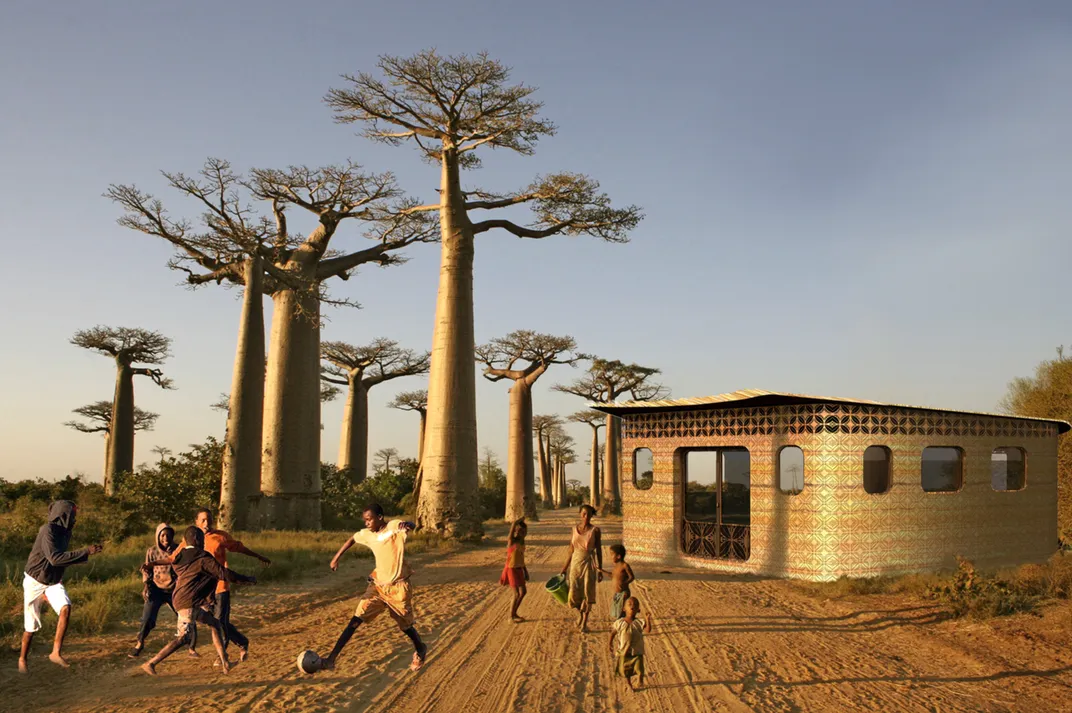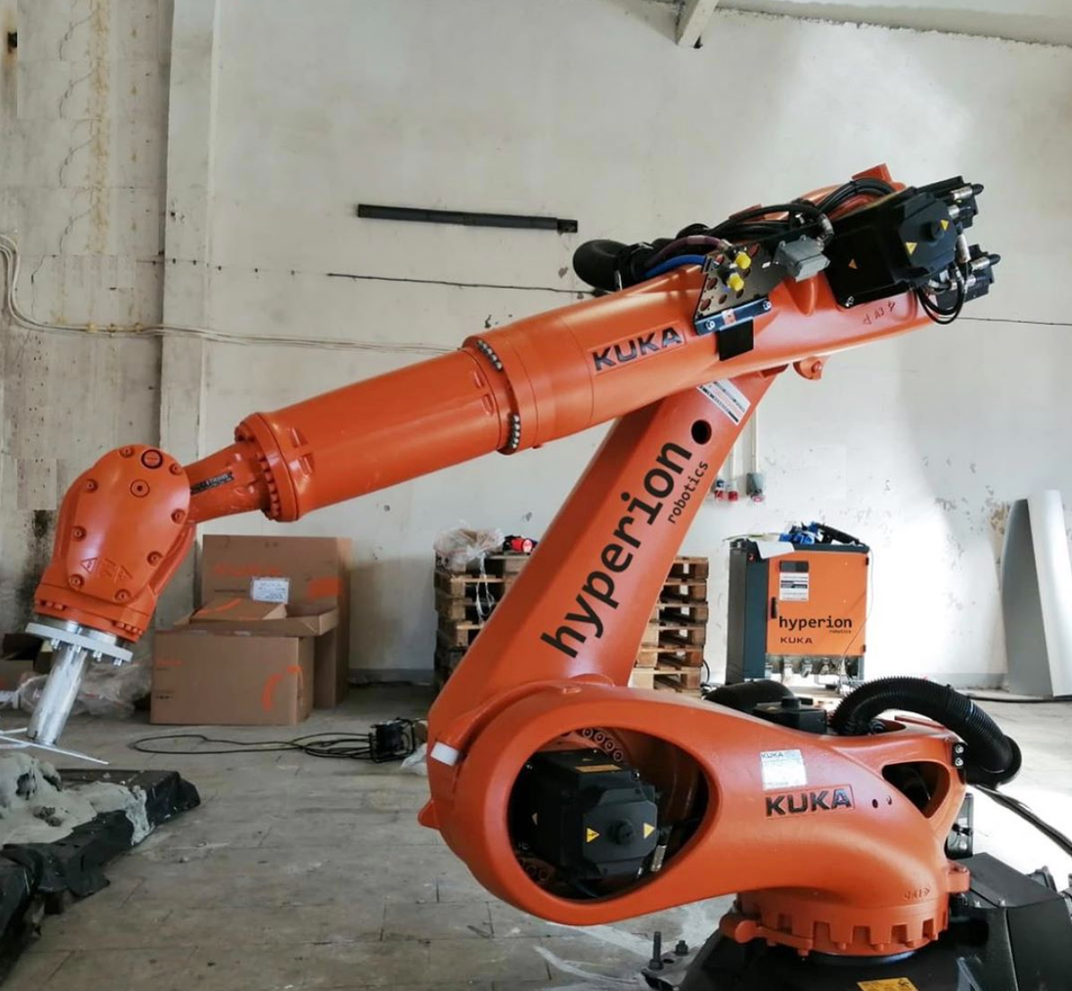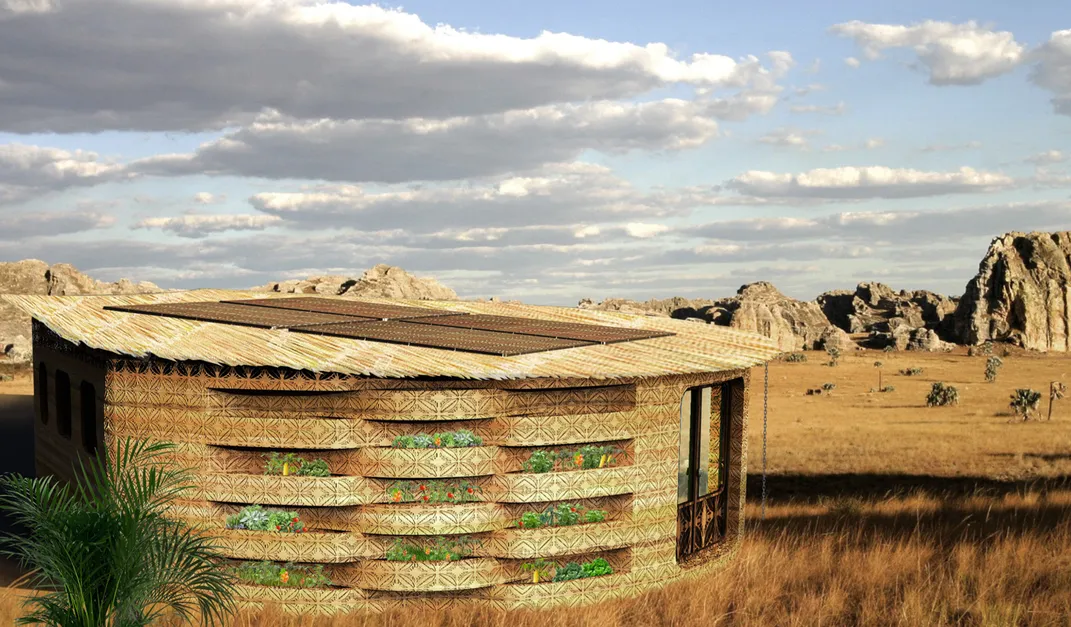The World’s First 3-D Printed School May Soon Be a Reality
Thinking Huts, a nonprofit founded by a 15-year-old, plans to kick off construction in Madagascar this summer
/https://tf-cmsv2-smithsonianmag-media.s3.amazonaws.com/filer/75/d4/75d4b8b2-2a62-4e32-b4b3-96df383ae534/mortazavi_x_thinking_huts_design3.png)
When Covid-19 eventually abates, children across America will once again fidget in classrooms, sip from hallway water fountains and bounce balls in shiny-floored gymnasiums. But globally, more than a quarter billion children have no access to school at all, virus or no virus.
Maggie Grout hopes to help change that. Grout, a senior at the University of Colorado studying business management and entrepreneurship, started Thinking Huts, a nonprofit to build 3-D printed schools, when she was just 15 years old. Adopted from a rural village in China, she knew not all children had the privileges she had, and she wanted a way to help. She was inspired to turn to 3-D printing after conversations with her father, Harry Grout, one of the founders of MapQuest, about how to use technology for the greater good. Now Thinking Huts is poised to print its first school, in the African island nation of Madagascar. If successful, it will be the world’s first 3-D printed school.

“Compared to traditional construction, 3-D printed schools can be built in a fraction of the time while also reducing waste, since the walls are honeycombed and hollow,” Grout says. “Another benefit is that 3-D printing significantly decreases costs with economies of scale."
This means the more schools you print, the cheaper the printing becomes, as the process is perfected and the technology becomes more common and therefore cheaper. As of now, Grout expects the pilot school to cost about $20,000, half of what local nonprofits spend on building traditional schools in Madagascar.
Construction is set to begin this summer in Fianarantsoa, a city in southern Madagascar with a population of about 200,000. The first building will be 765 square feet, built on the campus of a local university to serve about 20 engineering students. If all goes well, Thinking Huts will then build four schools in Ibity, a rural area in the country’s agricultural central highlands, in mid-2022.
The team decided to trial the project in an urban area so they could get a handle on the local supply chain process before replicating it in a more rural location. Thinking Huts chose Madagascar because of its stability, growth potential and renewable energy opportunities, as well as connections to the local university in Fianarantsoa.

Around 1.3 million of the country's primary students are not enrolled in school because of overcrowding and lack of investment in education infrastructure, Grout says. “Future schools will largely serve primary-age students where the need is greatest,” she adds.
The school building in Fianarantsoa was designed by San Francisco- and Lisbon-based architecture firm Studio Mortazavi, which Grout chose for its founders' interest in sustainable building. Each individual unit—or “hut”—is a polygon, with two entrances, two bathrooms and a closet, with an exterior covered with patterns inspired by traditional Madagascar textiles. Electricity for light and internet comes from solar panels. Doors and roofs are made from local materials, such as corruguated tin and wood carved by artisans, while outer walls can be fitted with pockets to allow for vertical farming or footholds to serve as climbing walls for kids. Rather than the typical concrete gray, the huts will be a graduated reddish-brown, like many of the buildings in Fianarantsoa. “We want the building to be camouflaged to its natural habitat,” architect Amir Mortazavi told Architectural Digest.

For the actual construction, cement-like material will be piped out like frosting from a pastry bag, forming layers that accrete upward to become walls. Hyperion Robotics, a Helsinki-based company that both fabricates 3-D printed construction elements and rents and sells 3-D printers, is providing a printer. Hyperion has used its 6.5-foot-tall printers to construct columns and foundations for buildings; the company has also 3-D printed coral to rebuild decimated reefs. Once work is started, the architects expect construction of the pilot school to take less than a week, including plumbing and electrical work, compared to the months- or years-long process that would normally occur.
Because of their honeycomb shape, the huts can fit together like a beehive, expanding to fit growing needs. The 3-D printer can be left on site, for local workers to add new huts as needed. In the case of the pilot school, the engineering students will be taught to work the printer themselves.

“Construction 3-D printing has evolved in a very impressive way,” says Hyperion's co-founder and CEO Fernando De Los Rios. “We can already see projects around the world where large-scale 3-D printers are building different structures, from small concrete elements to entire multi-story buildings and even bridges.”
Indeed, a number of 3-D printed bridges have debuted in the past five years, including a short steel span in the Netherlands and a rippled concrete pedestrian crossing in Shanghai. The world's largest 3-D printed building opened in Dubai in 2019, a two-story office more than 30 feet high.
De Los Rios envisions a future when automated 3-D printers can take the lead on construction projects. “Construction sites will be like massive in-situ assembly lines, with a cleaner and safer process where humans will simply take care of monitoring the process,” he says.
The Covid-19 pandemic has been an enormous challenge, Grout admits. She hasn’t been able to travel to Madagascar, and so has instead communicated with local stakeholders remotely. Fundraising has also been a struggle, as it has been for nonprofits worldwide; Grout has raised about half of her $350,000 goal. The logistics of building in rural locations, especially where internet access is lacking and difficult to install, will be challenging in the future.
Because it’s so new—3-D construction has only really gained steam in the past decade—this type of construction is largely untested in real-life settings, says Olaf Diegel, a professor of engineering at the University of Auckland in New Zealand, who studies the technology. “Talk of enormously cheaper low-cost building has not quite yet been proven in the real world,” Diegel says. “Part of the challenge is that making the walls, printed or otherwise, is only a small percentage of the cost of making a house.”
The most obvious place where 3-D printed construction adds value, Diegel says, is in creating structures in danger zones, natural or otherwise, where robots can do the work rather than humans. So far, everyday applications of 3-D printing in construction, such as with schools, remain mostly theoretical. “There have been literally hundreds of 3-D printed concrete structures around the world, but almost all of them, to date, have been technological demonstrators rather than real production-level houses,” he says. “I love the technology, and think it does have huge potential in the area,” Diegel says, but how it works in any given scenario is wait-and-see.
Grout aims to bring 3-D construction from theory to reality. By identifying and fixing any problems as they arise, she hopes to streamline the building process. Ultimately, she dreams of bringing a 3-D printed school to any community worldwide that has need. Thinking Huts is considering projects with a community in Zimbabwe and a refugee camp in Malawi.
“If all goes to plan,” she says, of the pilot, “we will be open by the start of the new year with classes in session.”
/https://tf-cmsv2-smithsonianmag-media.s3.amazonaws.com/accounts/headshot/matchar.png)


/https://tf-cmsv2-smithsonianmag-media.s3.amazonaws.com/accounts/headshot/matchar.png)